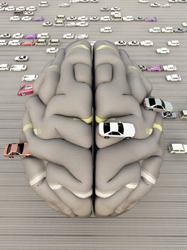Using electronics for the most intelligent way to drive
Car accidents are 97 % due to driver error. To reduce the number of accidents on Europe's increasingly busy roads, the most logical path is to develop an accident avoidance system that can override driver input if danger threatens. The EU-funded project 'Powertrain equipped with intelligent technologies' (PEIT), designed and developed an electronically controlled powertrain with input from a human machine set of displays and controls, the interface. The powertrain is the engine and other components that transfer the power to the drive function of the vehicle. PEIT engineers developed an intelligent powertrain that would be virtually accident-free. A key feature is that the powertrain interface makes possible the integration of completely drive by wire applications into the system for steering and braking, gear-changing, as well as energy management. Drive by wire replaces the mechanical with electronic control systems. Hence steering wheel, pumps, driveshafts and other traditional components are missing. In conjunction with this electronic control system, an intelligent tyre was developed that can record the level of friction between it and the road. Information from the tyre is used to determine how well the car can handle corners and brake in any conditions. Friction is obviously the main criterion when roads become slippery. PEIT research established a firm platform on which to further developments of intelligent systems for reducing accidents and improve energy efficiency. Research planned in the follow-on project, SPARC, included advanced drive by wire systems and a co-pilot for heavy goods and passenger vehicles.



